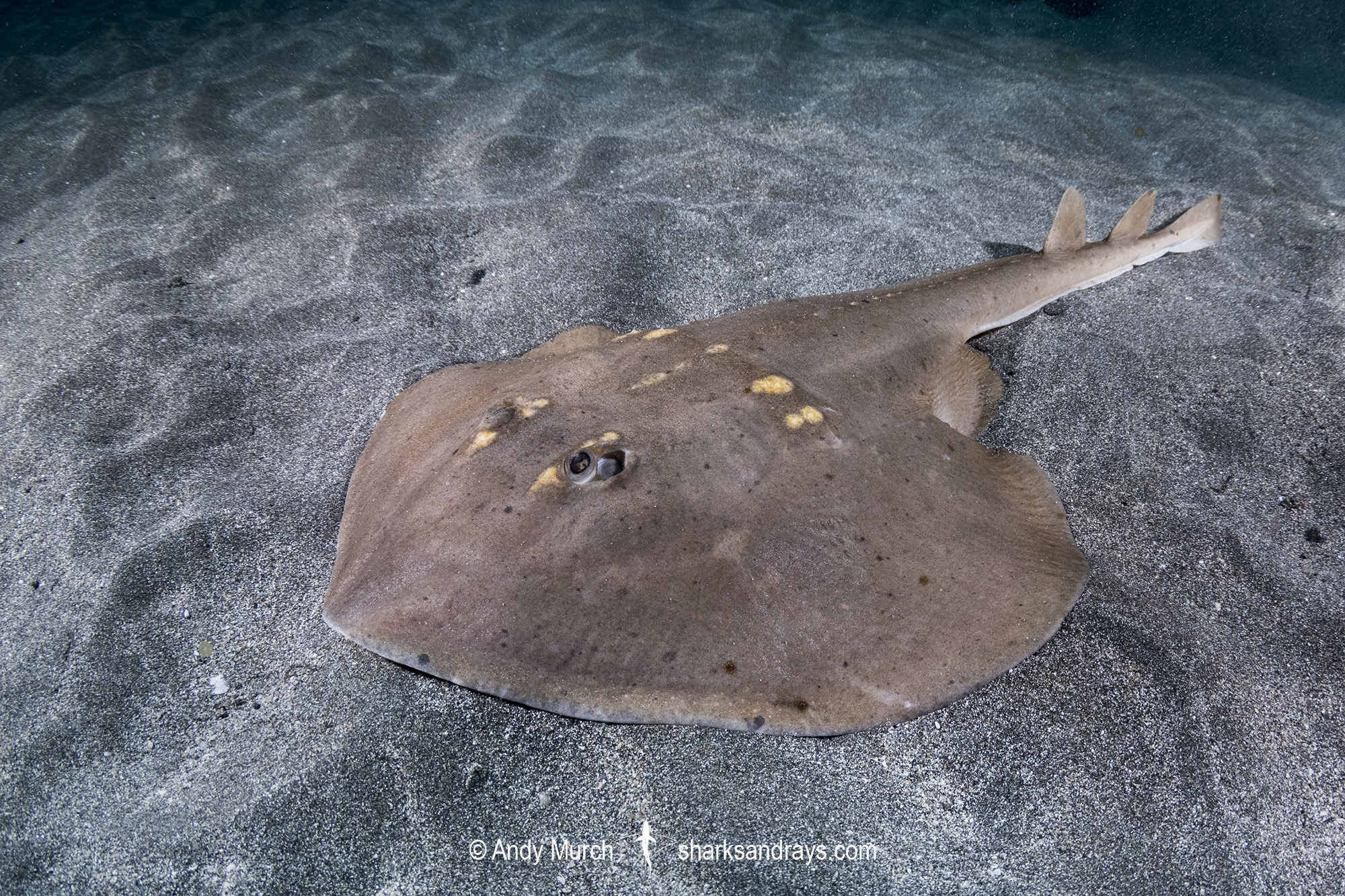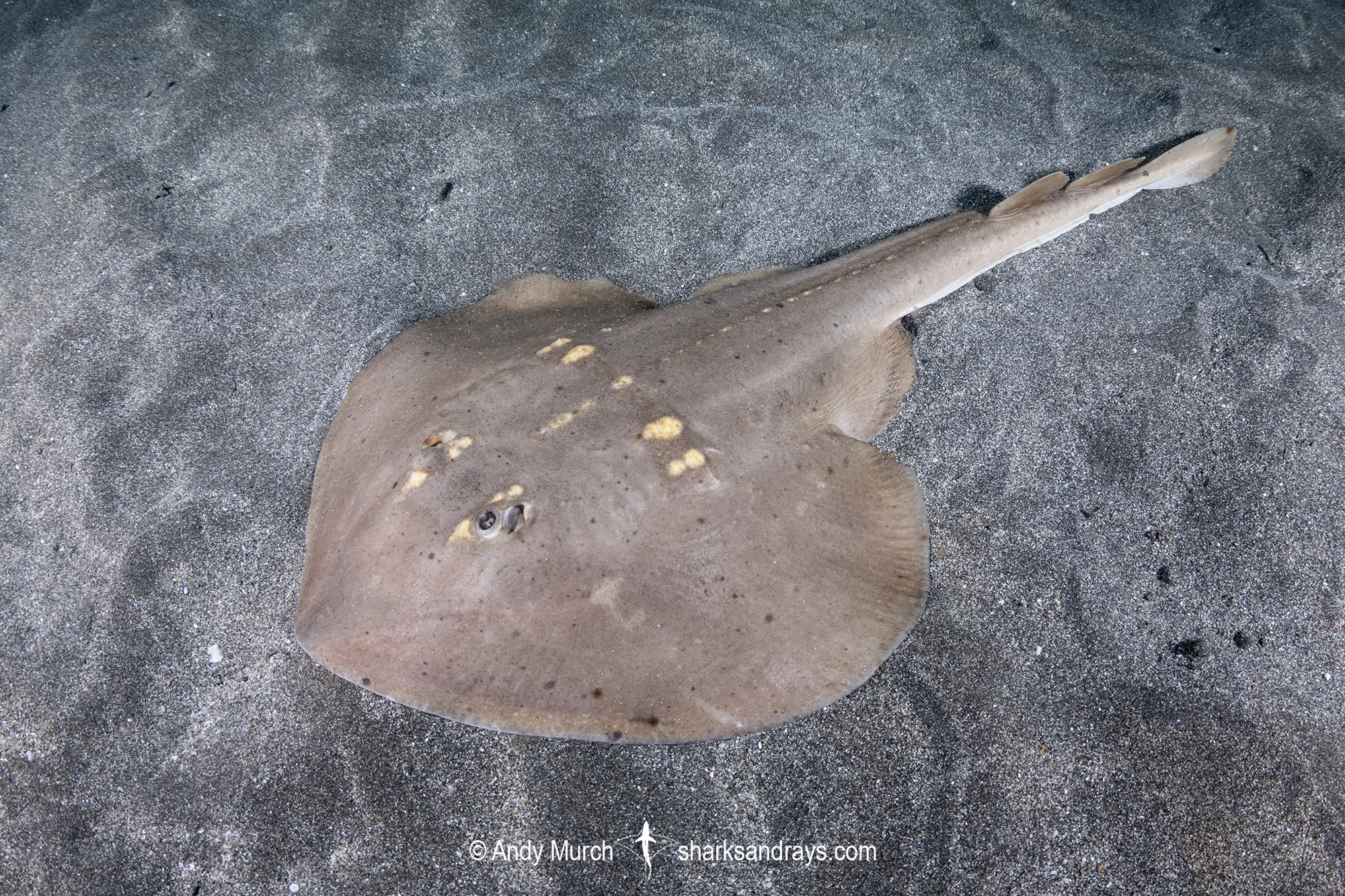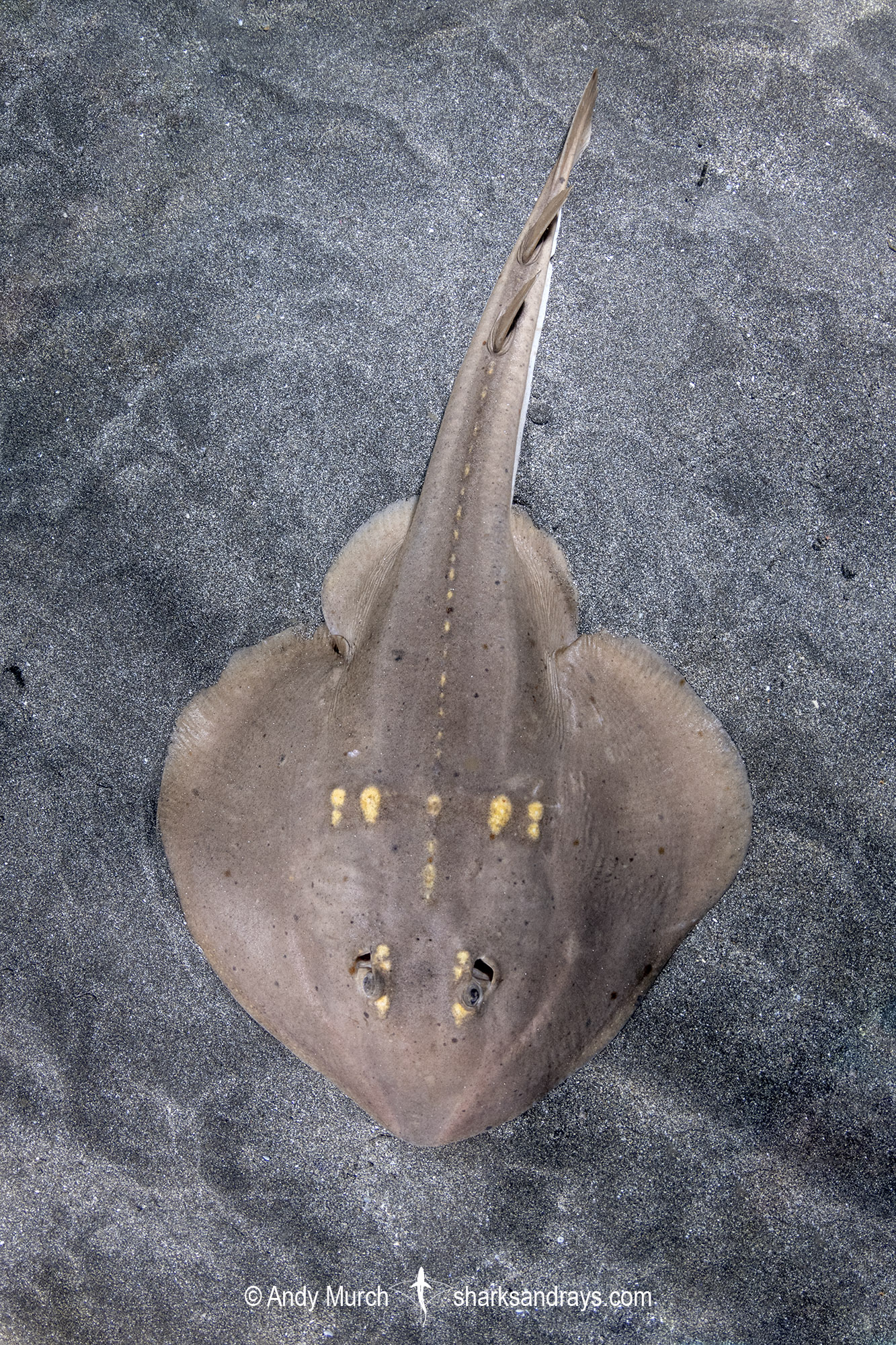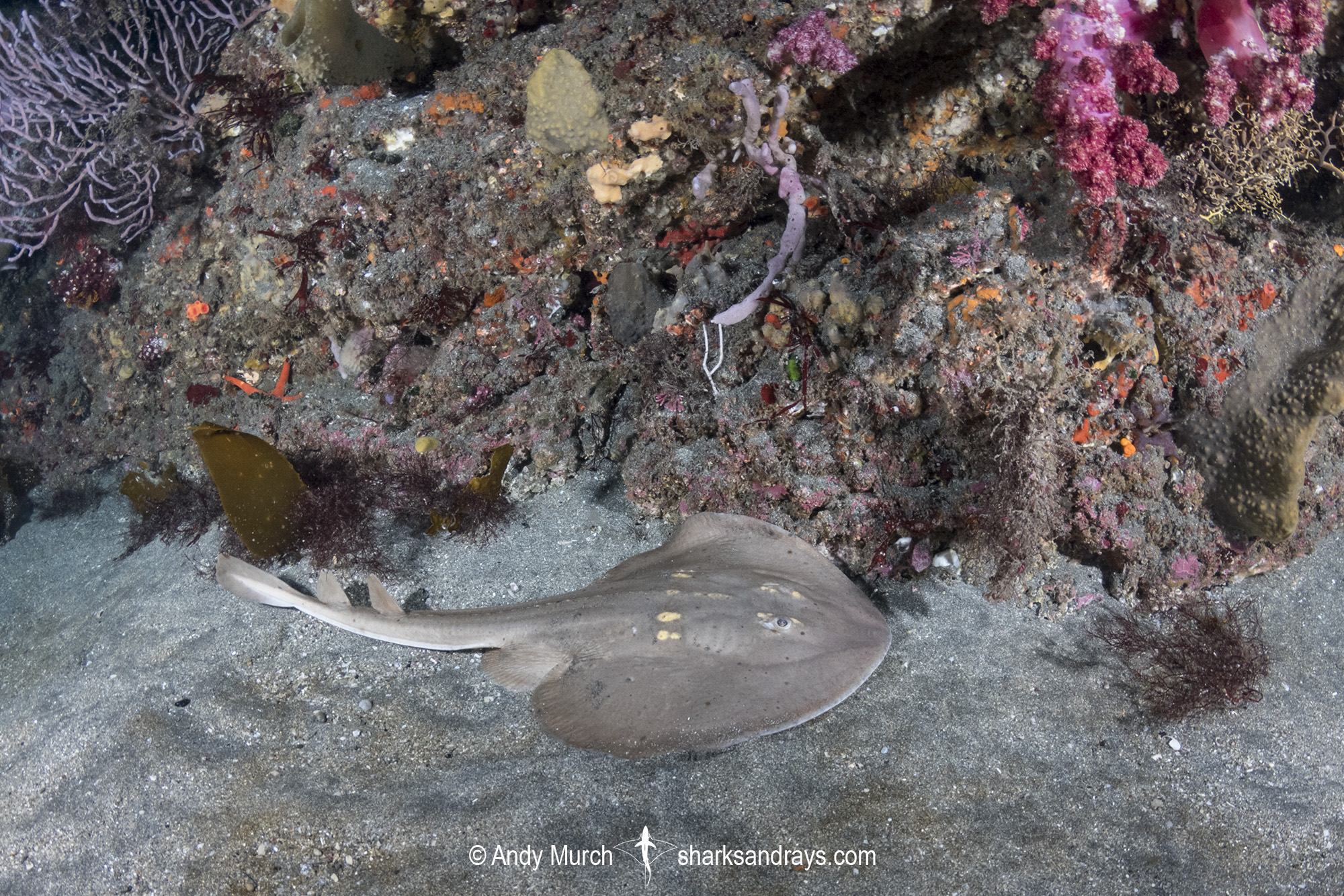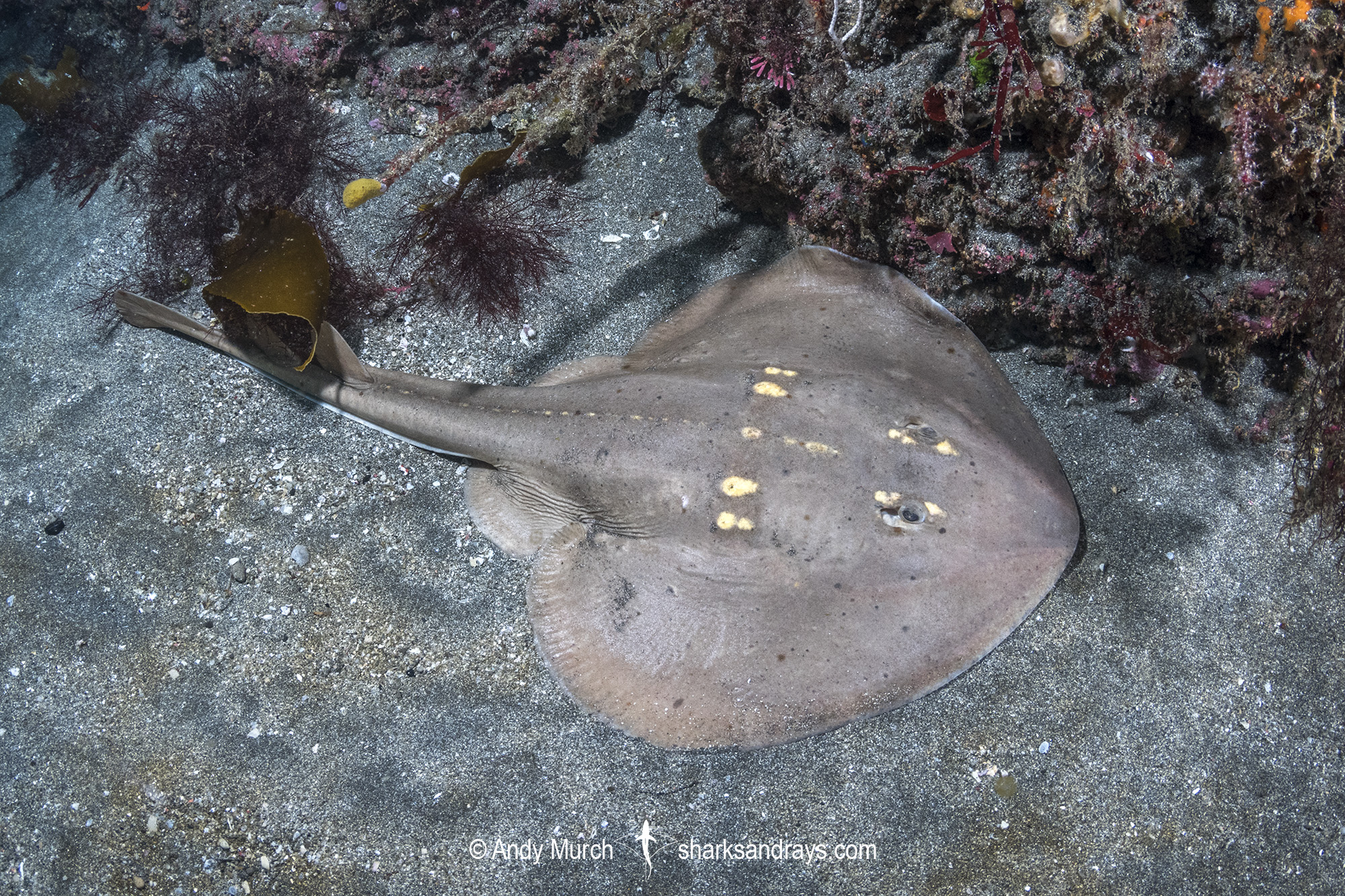Common names
Yellowspotted Fanray, Thornback Ray.
Binomial
Platyrhina tangi.
Synonyms
None.
Identification
A medium-sized fanray with a heart-shaped disc, an obliquely pointed snout, and a broad torso. Pectoral fin apices broadly rounded. Pelvic fins long and low, with broadly rounded outer margins and acutely angular free rear tips.
Eyes somewhat protruding, and closely spaced. Nostrils thin, well separated, and positioned somewhat obliquely. Nostrils connected to mouth by a wide groove.
Skin covered in small dermal denticles. Short thorns present on midline from nape to second dorsal fin. Two pairs of large, flattened, oval thorns present on inner and outer shoulders. Two large thorns anterior, and 2 thorns posterior to each eye.
Tail long and broad; tapering gently to terminal lobe. Two high dorsal fins with rounded apices and mildly convex posterior margins present on posterior tail. Origin of first dorsal fin approximately at mid tail. Caudal lobe large and spatulate. Caudal sting absent.
Colour
Dorsum greyish brown, beige, or brown, sometimes with a dusky stripe along midline. Enlarged thorns on midline, shoulders, and around eyes yellow – collectively forming a dotted, yellow cross. Ventrum white, usually with a few grey blotches. Dusky towards ventral margin of disc.
Size
Maximum length at least 64cm, probably 70cm. Size at birth unknown.
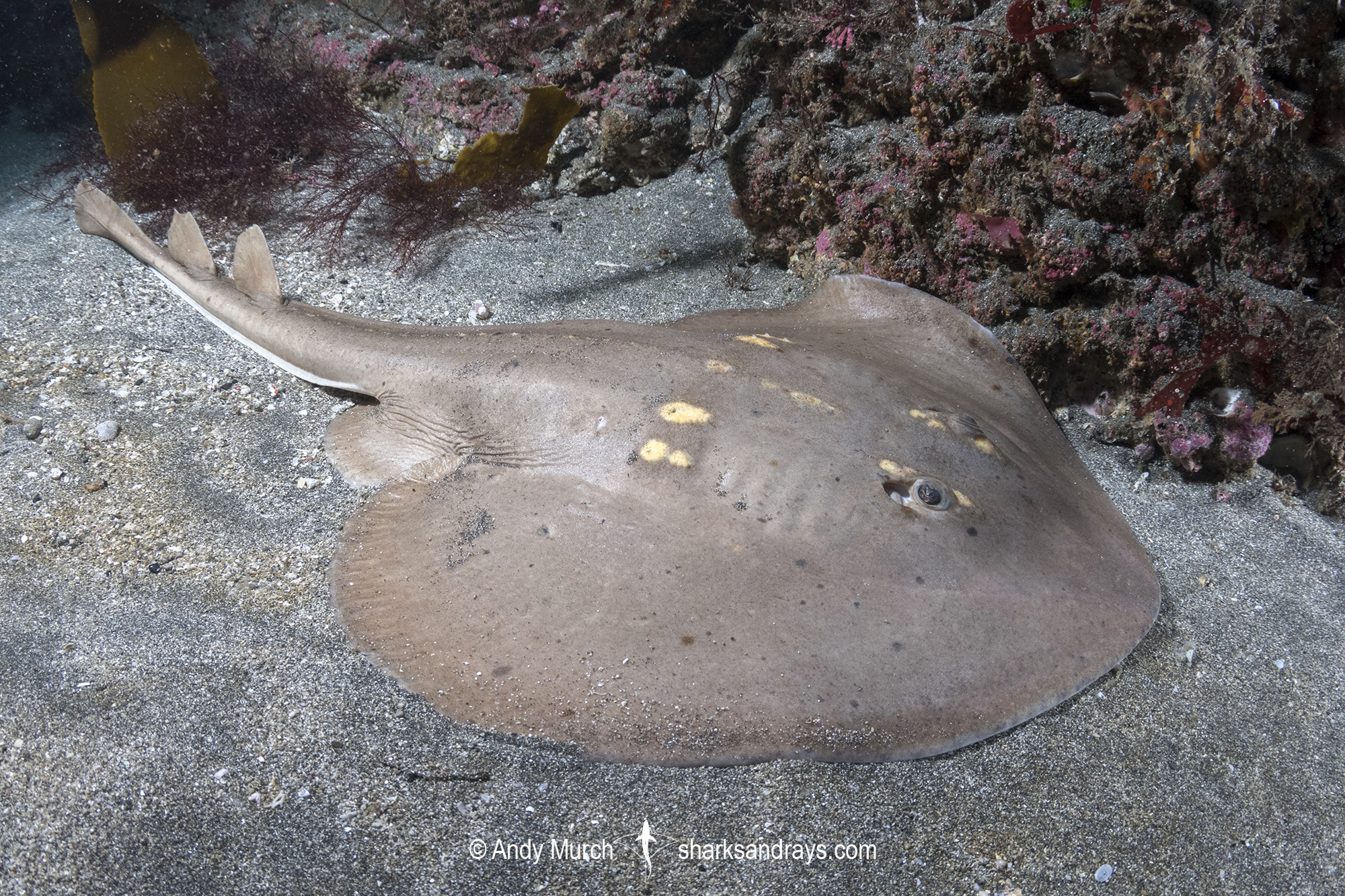
Conservation Status
VULNERABLE
The Yellowspotted Fanray (Platyrhina tangi) is a bycatch component of many ground fisheries, which are intesive throughout its range. Although not targeted, is generally retained for human consumption or for processing into fish meal.

Habitat
Benthic in tropical to Warm-temperate seas. Rocky and sandy substrates from surface to 100m but usually 30-40m.
Distribution
Northwest Pacific. Found from southern Japan, Korea, China, and Taiwan.
Reproduction
Aplacental viviparous with yolk sac. Litter size unknown.
Diet
Diet consists of small shrimps, mysids and small fish.
Behavior
Poorly known.
Reaction to divers
Remains motionless unless disturbed.
Diving logistics
Sightings of yellowspotted fanrays while on scuba are rare. Due to poor visibility along the coast of mainland China, the best area to look for this species is probably southern Japan. Searching on sandy substrates adjacent to deep rocky reefs at 30-40m should be the most productive.
What’s new
View our full list of updates
Similar species
Hyuga Fanray Distinguished by absense of yellow spots. Endemic to southern Japan.
Chinese Fanray Distinguished by absense of yellow spots, and double row of thorns dorsally on tail.

